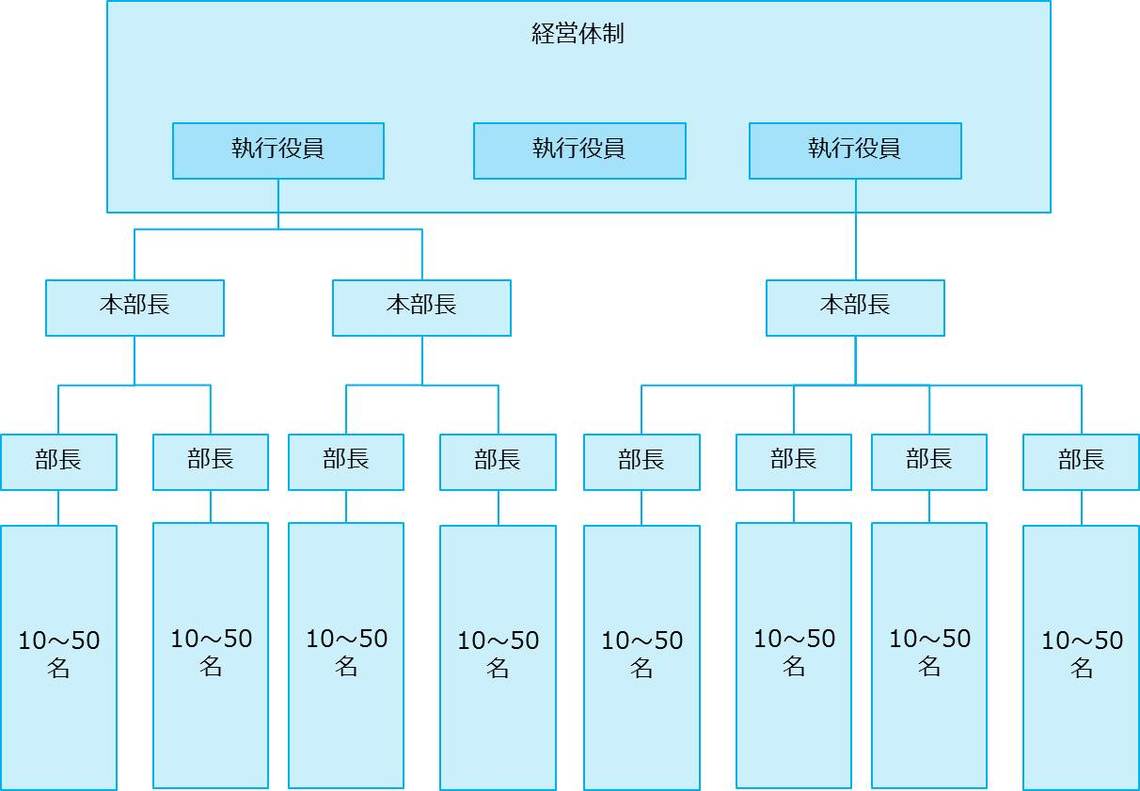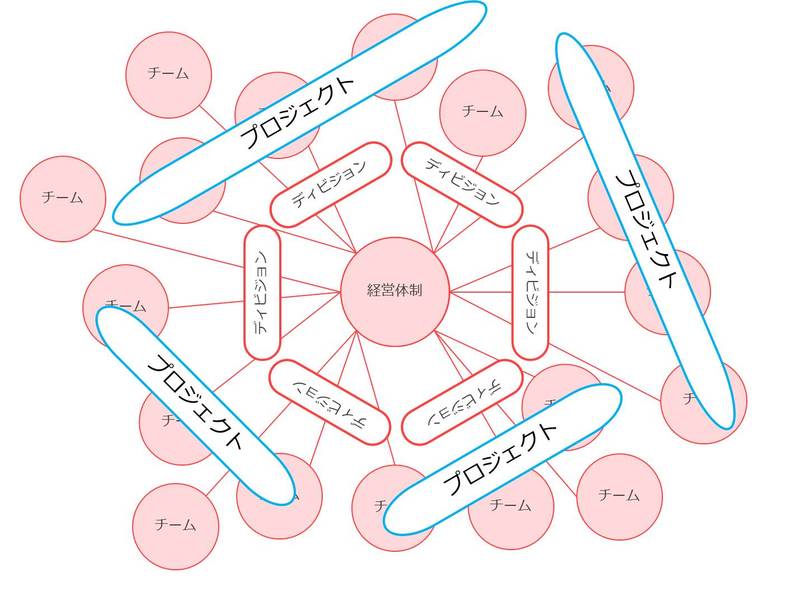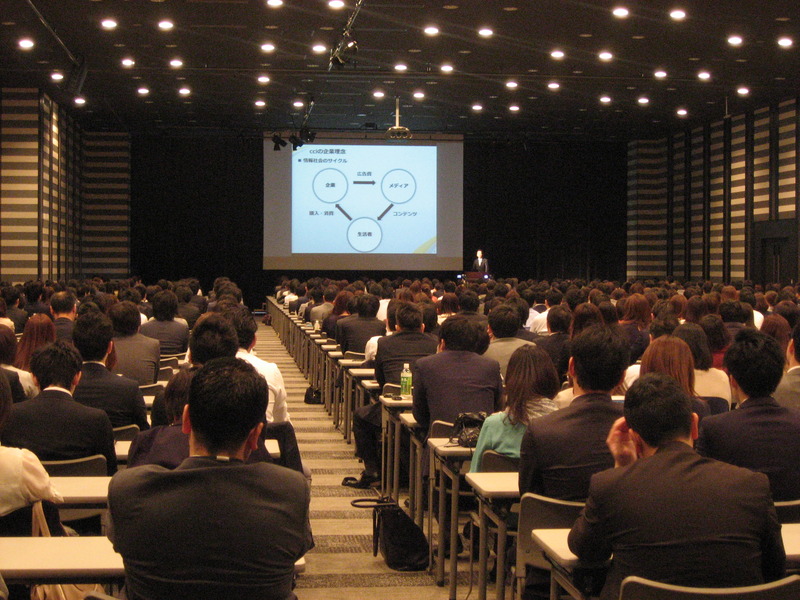Cyber Communications, the core digital arm of the Dentsu Group, has implemented a bold reform: the complete abolition of all managerial positions. What is President Niizawa's vision for the organizational structure of the new era?
Challenges Born in an Organization That Grew Rapidly Alongside Internet Advertising
This April, we embarked on what we call a major organizational and personnel reform, implementing significant changes to our organizational and personnel systems. Over the past 18 years, our company grew alongside the expansion of the internet advertising market. With that growth, the organization ballooned significantly. This led to a structure where vertical relationships became distant and horizontal collaboration difficult, resulting in an organization severely lacking in communication.
Another drawback of continuous expansion was the proliferation of "positions." While roles are necessary for organizational function, they sometimes become tied to specific individuals. This creates obstacles during organizational restructuring—for example, the question "So what role do we give that person?" arises when changing the structure.
In the rapidly changing internet advertising market, where new methods and media emerge constantly, an organization lacking communication and struggling to adapt flexibly is fatal. We considered organizational reform an urgent necessity. Therefore, we undertook the following reforms:
・Reorganized the 18 "Headquarters" functions by service and consolidated them into 6 divisions
・Eliminated all "titles" and shifted to a "role-based" approach
・Shifted from a large "department" structure to a small "team" structure
We eliminated all existing executive officer, headquarters director, and department head positions. We dismantled the 18 vertically structured headquarters and their "departments" (which often housed nearly 50 people), replacing them with a structure of small "teams" (4-7 people) within six divisions.
The following diagram clearly illustrates the intent behind this change.
 |
| Tree Structure vs. Circle Structure |
 |
An Era Where "Roles" Drive the Organization, Not "Titles"
In this way, we are moving away from the traditional tree-structured organizational form and aiming for a structure closer to a circle. Broadly speaking, there are three main objectives.
First is streamlining the management structure. By reorganizing the previous 18 function-based departments into 6 divisions organized by service, we've facilitated cross-functional collaboration. Furthermore, delegating authority enables faster decision-making.
Second is creating a flatter organizational structure. By reducing reporting and information-sharing steps, we ensure management decisions reach the field quickly and frontline insights are immediately reflected in management decisions. Under this new structure, we eliminated the concept of "titles" and introduced the "role" of Team Manager to lead teams. These managers can now directly propose agenda items to management, transforming what could have become a mere formality into a forum for lively debate. This allows us to swiftly incorporate the perspectives of the younger, digitally native generation, who feel a strong sense of ownership in management. Furthermore, the streamlined management team can make decisions after thorough discussion of each proposal.
Third, to prevent organizational bloat and rigidity, we restructured all units into small teams. This creates a flexible, scrap-and-build structure that facilitates organizational reform in the rapidly changing digital advertising industry.
Beyond these teams, we've established a matrix organization called "Projects" that crosses team boundaries to tackle strategic challenges. This approach aims to foster greater talent exchange, development, and new business creation. By assigning strategic digital advertising challenges to cross-functional teams—freeing talent from rigid team boundaries—we build end-to-end processes from planning to execution. We are beginning to see a cycle where new teams emerge from projects, which we consider an essential initiative for new organizational management.
 |
| Achieving Organizational Fluidity Through Cross-Functional Projects |
Eliminating job titles and adopting small-team structures also serves another major purpose: valuing people.
Not just at our company, but at many internet advertising firms, employees tend to be very young. Many become managers in their early 30s, sometimes distancing themselves from the front lines. Furthermore, outstanding performers who deliver results on the ground are often selected. While this criterion itself isn't necessarily problematic, it can sometimes lead to situations akin to telling a star pitcher who won dozens of games in a season, "You achieved great results, so starting next year, you'll be the manager." A great player does not necessarily make a great manager.
Shifting from "Manager" to "Captain": Prioritizing Frontline Career Paths
Considering their career plans for the next several decades, this seems incredibly wasteful. We believe staying at the forefront of this rapidly changing industry aligns with their career goals. Therefore, we're eliminating traditional titles, focusing on roles instead, and forming smaller teams. This reduces management duties, allowing them to continue performing frontline work.
We've shifted from appointing young players who could still shine on the pitch as managers to having them return to the field as captains, leading their teammates.
This simultaneously strengthens management oversight for field members. Smaller teams allow more dedicated management time per person, making it easier to grasp each member's thoughts and aspirations.
Our company places greater emphasis on "human resources" in this way, and many initiatives within this reform are based on that philosophy. The following initiatives are representative examples:
・Separation of Roles (Positions) and Qualification Levels
This aligns with the aforementioned abolition of titles. Our company had a system where qualifications directly increased compensation, and these qualifications were effectively tied to positions. Consequently, situations could arise where salary increases were impossible without a new position opening (i.e., a vacant post), or where organizational structures were designed solely to accommodate someone into a title (to increase their salary).
This also hindered the development of specialists. We saw increasing cases where specialists who delivered results in the field were assigned management roles, reducing opportunities for them to further hone their skills.
Therefore, we abolished positions themselves and separated roles from qualification grades. This clarified the meaning of "role" and presented a form of career advancement beyond mere promotion. Simultaneously, we aim to create salary increase opportunities for field members who deliver results and strengthen specialist development.
|
The key to success lies in whether all employees can share a common understanding
I've explained our company's current initiatives, but we are also implementing new approaches and systems one after another. However, all of these are still in their early stages, and we cannot yet proudly declare them a success. To achieve success, I believe the frequency of communication is critically important.
Since becoming president last July, I have made it a point to convey important messages—such as management policies and activity plans—directly to all employees whenever possible. After all, written documents alone often fail to convey the full intent.
 |
Scene from the 2014 Activity Plan Meeting held in April
|
Furthermore, we are implementing initiatives not only to enhance communication between management and employees but also to foster active communication among employees themselves. We believe that by increasing the volume of communication company-wide and having all employees work together with a shared vision, we can surely achieve success.
When these initiatives prove successful, I look forward to sharing the results with you.
|




